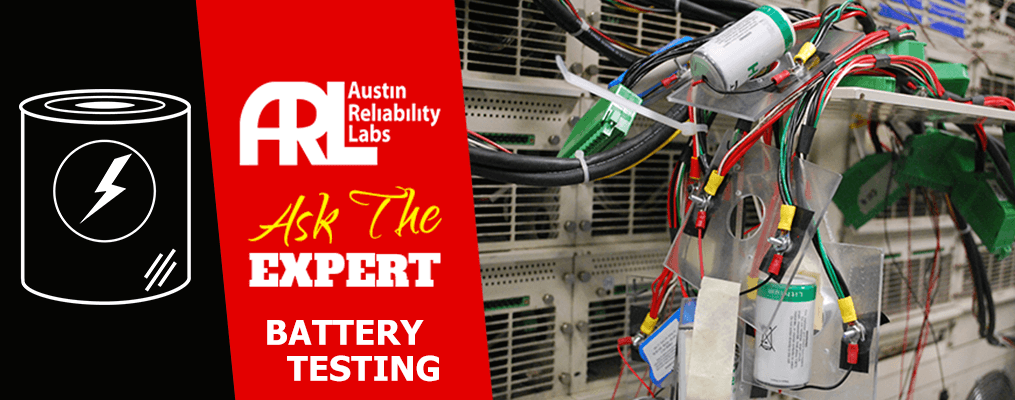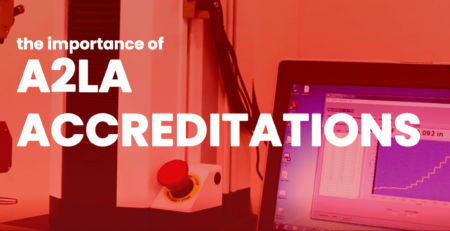Battery Testing Q&A
Joel Coffman2023-05-12T09:40:24-05:00Accelerated Battery Testing consists of repeated charge/discharge cycles under controlled conditions. Multiple samples are tested in several different environments in order to provide confidence in charge times, capacity and stability. This process identifies capacity loss as well as other possible weaknesses in the battery cell/pack, allowing you to bring battery technologies to market quickly and cost-effectively.
Austin Reliability Labs (ARL) Senior Lab Technician Jon Roesch answered a few key questions about battery testing, focusing on the testing process and comparing different types of batteries.
Q: What is a “smart” battery?
Jon: “A smart battery provides state-of-charge indications. An increasing number of today’s rechargeable batteries are made “smart”. Equipped with a microchip, these batteries are able to communicate with the charger and user alike.”
Q: Are a “smart” battery and a “dumb” battery tested the same way?
Jon: “Smart batteries are tested on the same equipment as dumb batteries. The only difference is that smart batteries control the charge profile (current and voltage cutoffs). The battery test equipment controls all aspects of dumb battery testing and the charge and discharge profile programmed through a schedule file.”
Q: What types of batteries can the ARL lab test?
Jon: “We can test three different types of batteries, which include primary cells (those that which are not rechargeable), secondary cells (individual batteries that are rechargeable), and pack configured secondary batteries (multiple battery cells that are grouped together in series, parallel, or a combination of series/parallel configuration). ARL has the ability to test each configuration to customer specific requirements which include, but are not limited to, constant current / constant voltage, dynamic current dynamic voltage, express charge, and variable discharge.”
Q: Does the chemical composition of the battery play a factor in the types of battery the lab can test?
Jon: “Chemical compositions do not factor in as a limitation of the type of batteries which can be tested due to the fact that all types require the same amount of control during charge and discharge cycles. However, some limitations in discharge profiles are relevant such as low current drain discharges (below 50mA) and pulsed discharges (discharge current pulses less than 500ms).”






